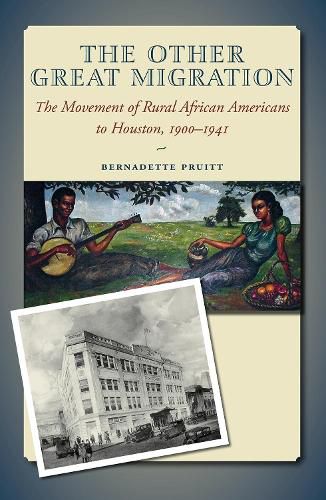Readings Newsletter
Become a Readings Member to make your shopping experience even easier.
Sign in or sign up for free!
You’re not far away from qualifying for FREE standard shipping within Australia
You’ve qualified for FREE standard shipping within Australia
The cart is loading…






This title is printed to order. This book may have been self-published. If so, we cannot guarantee the quality of the content. In the main most books will have gone through the editing process however some may not. We therefore suggest that you be aware of this before ordering this book. If in doubt check either the author or publisher’s details as we are unable to accept any returns unless they are faulty. Please contact us if you have any questions.
The twentieth century has seen two great waves of African American migration from rural areas into the city, changing not only the country’s demographics but also black culture. In her thorough study of migration to Houston, Bernadette Pruitt portrays the move from rural to urban homes in Jim Crow Houston as a form of black activism and resistance to racism.
Between 1900 and 1950 nearly fifty thousand blacks left their rural communities and small towns in Texas and Louisiana for Houston. Jim Crow proscription, disfranchisement, acts of violence and brutality, and rural poverty pushed them from their homes; the lure of social advancement and prosperity based on urban-industrial development drew them. Houston’s close proximity to basic minerals, innovations in transportation, increased trade, augmented economic revenue, and industrial development prompted white families, commercial businesses, and industries near the Houston Ship Channel to recruit blacks and other immigrants to the city as domestic laborers and wage earners.
Using census data, manuscript collections, government records, and oral history interviews, Pruitt details who the migrants were, why they embarked on their journeys to Houston, the migration networks on which they relied, the jobs they held, the neighborhoods into which they settled, the culture and institutions they transplanted into the city, and the communities and people they transformed in Houston.
$9.00 standard shipping within Australia
FREE standard shipping within Australia for orders over $100.00
Express & International shipping calculated at checkout
This title is printed to order. This book may have been self-published. If so, we cannot guarantee the quality of the content. In the main most books will have gone through the editing process however some may not. We therefore suggest that you be aware of this before ordering this book. If in doubt check either the author or publisher’s details as we are unable to accept any returns unless they are faulty. Please contact us if you have any questions.
The twentieth century has seen two great waves of African American migration from rural areas into the city, changing not only the country’s demographics but also black culture. In her thorough study of migration to Houston, Bernadette Pruitt portrays the move from rural to urban homes in Jim Crow Houston as a form of black activism and resistance to racism.
Between 1900 and 1950 nearly fifty thousand blacks left their rural communities and small towns in Texas and Louisiana for Houston. Jim Crow proscription, disfranchisement, acts of violence and brutality, and rural poverty pushed them from their homes; the lure of social advancement and prosperity based on urban-industrial development drew them. Houston’s close proximity to basic minerals, innovations in transportation, increased trade, augmented economic revenue, and industrial development prompted white families, commercial businesses, and industries near the Houston Ship Channel to recruit blacks and other immigrants to the city as domestic laborers and wage earners.
Using census data, manuscript collections, government records, and oral history interviews, Pruitt details who the migrants were, why they embarked on their journeys to Houston, the migration networks on which they relied, the jobs they held, the neighborhoods into which they settled, the culture and institutions they transplanted into the city, and the communities and people they transformed in Houston.